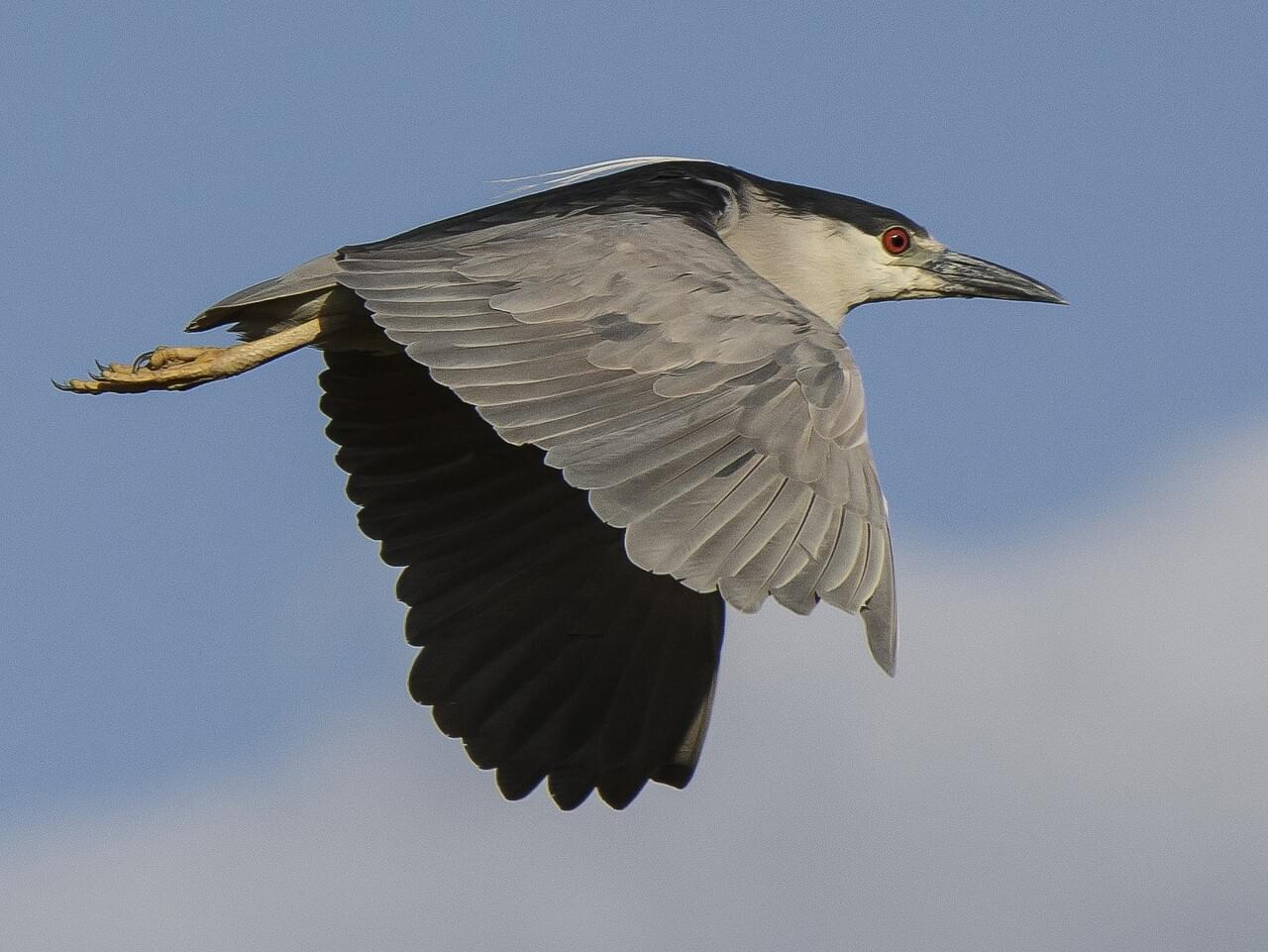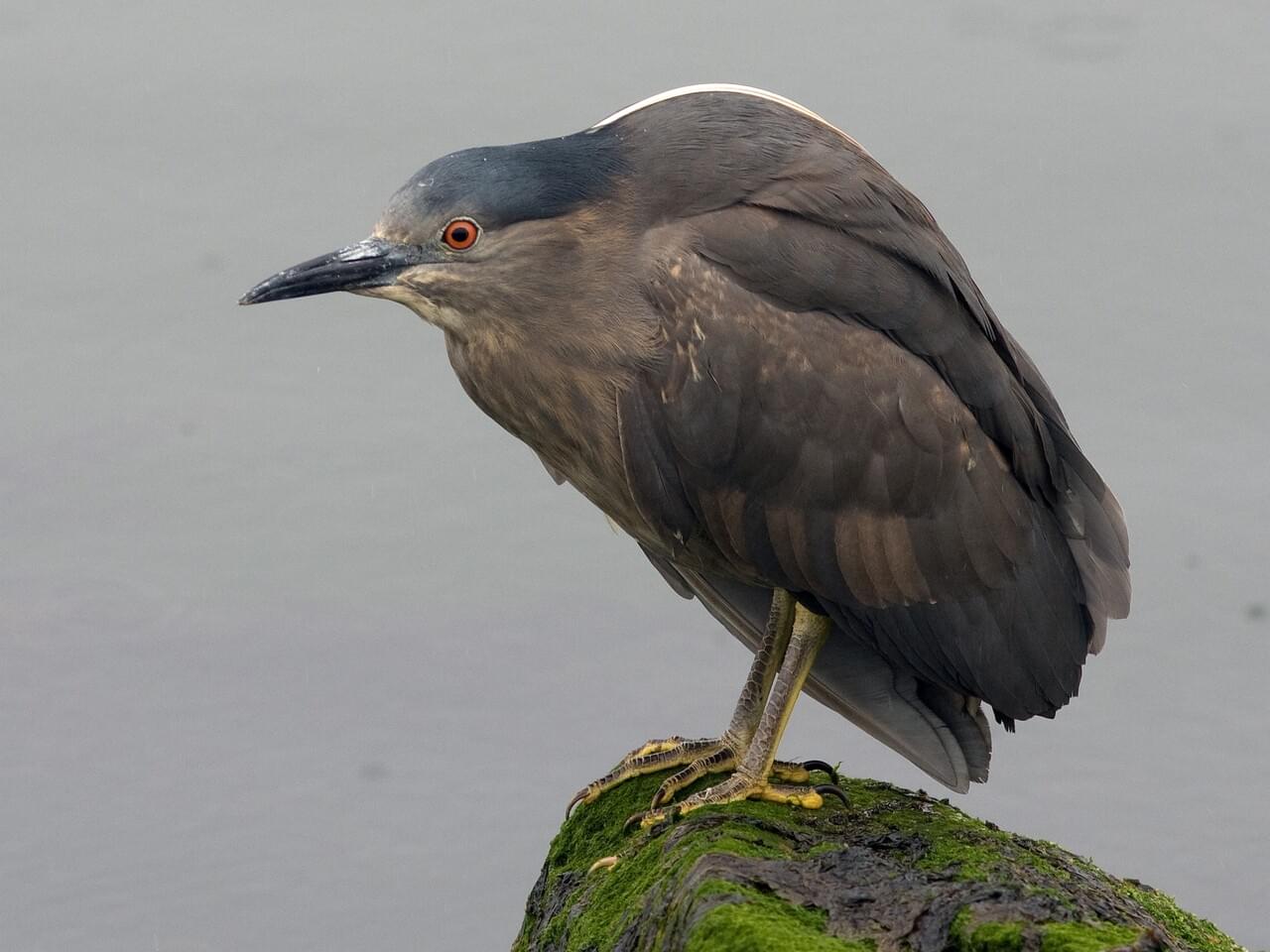 Photo ©
Liz Clayton Fuller
Photo ©
Liz Clayton Fuller
Black-crowned Night-Heron
Main Focal Species
Black-crowned Night Herons are stocky birds compared to many of their long-limbed heron relatives. They’re most active at night or at dusk, when you may see their ghostly forms flapping out from daytime roosts to forage in wetlands. In the light of day adults are striking in gray-and-black plumage and long white head plumes. These social birds breed in colonies of stick nests usually built over water. They live in fresh, salt, and brackish wetlands and are the most widespread heron in the world.
Range

Habitat
Black-crowned Night Herons are common in wetlands across North America, including saltmarshes, freshwater marshes, swamps, streams, rivers, lakes, ponds, lagoons, tidal mudflats, canals, reservoirs, and wet agricultural fields. They require aquatic habitat for foraging and terrestrial vegetation for cover. They spend the winter in southern and coastal portions of their breeding range as well as across Mexico and Central America, where they use mangroves, marshes, swamps, lagoons, and flooded rice fields.
Food
Black-crowned Night Herons are opportunists feeders that eat many kinds of terrestrial, freshwater, and marine animals. Their diet includes leeches, earthworms, insects, crayfish, clams, mussels, fish, amphibians, lizards, snakes, turtles, rodents, birds, and eggs. They also eat carrion, plant materials, and garbage from landfills. Rather than stabbing their prey, they grasp it in their bills. Black-crowned Night-Herons normally feed between evening and early morning, avoiding competition with other heron species that use the same habitat during the day. They may feed during the day in the breeding season, when they need extra energy for nesting.
Behavior
Black-crowned Night Herons nest colonially and behave socially all year long. Both males and females vigorously defend feeding and nesting territories, sometimes striking with their bills and grabbing each other’s bills or wings. This species is probably monogamous. The male advertises for a mate with displays that involve bowing and raising the long plume on his head. Both the male and the female incubate the eggs and brood the chicks, greeting each other with calls and raised feathers when switching over duties. The young leave the nest at the age of 1 month and move through the vegetation on foot, forming nocturnal flocks in feeding areas. They learn to fly when they are 6 weeks old, and then disperse widely.
Nesting
The male starts building the nest, a platform of sticks, twigs, and other woody vegetation which he collects from the ground (or breaks right off of the trees). Once he has found a mate, the male continues collecting material but passes it to the female, who works it into the nest. Some nests are sturdy, while others are flimsy. They measure 12–18 inches across and 8–12 inches high.
Appearance
Typical Sound
© Bob McGuire | Macaulay Library
Adult Descripton
- Medium-sized, stocky heron.
- Short neck and thick black bill.
- Black cap and back.
- Wings gray.
- Underparts white.
Immature Description
Brown with white spots on the wings and broad, indistinct streaks on the underparts. Bill mostly yellow.
Plumage Photos
Similar Species
Yellow-crowned Night Herons are more restricted to the southern United States than Black-crowned Night Herons. They have thicker bills than Black-crowned Night Herons and slightly longer legs that extend past the tail in flight. Adult Yellow-crowned Night Herons are darker gray, particularly on the underparts, with an overall darker head, prominent white cheek patch, and yellow crown. Immature night herons are more similar, but young Yellow-crowned have much finer white spotting on the wings. Green Herons are smaller than night-herons, with more slender bills and less bulky proportions. Adult Green Herons are darker and more richly colored in green and reddish tones; immature Green Herons are redder on the neck than night herons. American Bitterns are larger with a longer, narrower bill and longer neck than night-herons. They are a lighter straw-brown and they do not have the white spotting of immature night-herons.
Did you know?!
- Young Black-crowned Night Heron may aggressively defend their nests, regurgitating and defecating (pooping) on human intruders, squawking with wings outstretched and beak wide open!
- When feeding Black-crowned Night Heron dive feet first, or plunge headfirst into the water. They generally sleep during day except when they have to find food for their young in daylight hours.
- It seems that adult Black-crowned Night Heron don’t distinguish between their own young and those from other nests, and will care for chicks that don’t belong to them.









